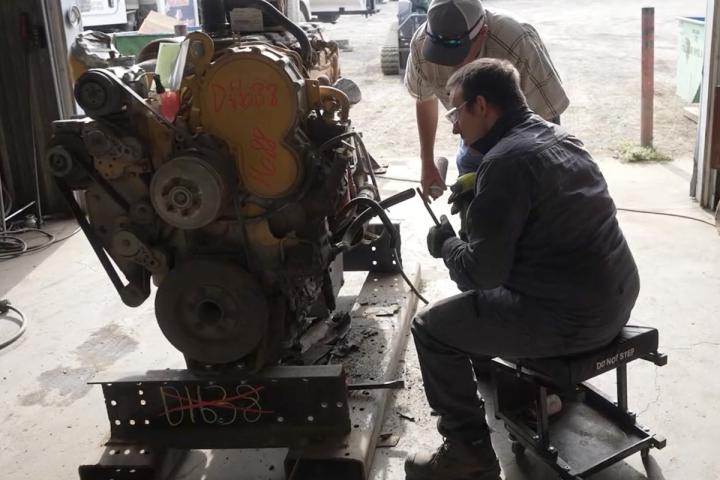
Stress-Busting in the Workplace
Stress Awareness Day is observed annually on the first Wednesday in November by the International Stress Management Association, and it is part of Stress Awareness Week. The day is a reminder to reflect on what stress is, how to stay ahead of it, and why one person’s overwhelming day is another person’s easy glide.
What is stress?
Adene Karhan, extension associate at the Yang-Tan Institute on Employment and Disability, has an MS in social work and is a licensed clinical social worker. “Stress is our response to things that are going on around us or inside us,” Karhan explained. “It’s a normal part of the human experience.”
Karhan pointed out that “people with disabilities will have the same bodily and mental stress responses as everybody else, however there’s more complex layers, sometimes, for people with disabilities, based on a variety of factors.” These factors could include bullying, discrimination, academic challenges or challenges at work.
According to Karhan, some trauma research puts stress on a continuum. It shows that when we are exposed to stress in small, manageable doses, and we have the right supports in place, stress can contribute to personal growth and build resilience, and it can help people who have experienced trauma to build resiliency. Stress becomes problematic when a person lacks the internal or external resources to deal with demands. As pressure builds, even a small additional stressor can create a crisis.
Responses to stress depend a lot on the specific person. “A job that you might get an adrenaline rush from that you love and do well with, somebody else could say ‘no, thank you, I could have the skill set to do that, but I don’t want that kind of stress, my personality doesn’t do well with that kind of stress.’” Karhan gave an example of a person with ADHD who wanted to work in an emergency room because they felt most engaged in a fast-paced environment, noting that “people are so different in terms of the best match of the work environment based how their body and personality respond to stress.”
“At the Yang-Tan Institute, when we think about stress, we tend to focus on making workplaces more accessible around stress,” Karhan pointed out.
Decreasing Stigma and Increasing Accessibility
Karhan says there is a lot of unhelpful stigma around stress, and that “in most workplaces we can talk about stress, but when it gets to a certain point, people feel like it’s a personal failure to be unable to manage without supports and that it’s not okay to ask for an accommodation to help with managing stress.” This is important because stress can contribute to creating a mental health condition – such as anxiety – or increase the symptoms of an existing condition.
Suggestions for the workplace:
- Normalize asking for help. Provide information about employee assistance programs, mental health benefits, and other stress-busting resources. “Make sure people know they don’t have to have a mental health diagnosis to get help,” Karhan recommended. Share this information in multiple formats and languages. One person might like to learn anonymously online, but another might prefer an in-person wellness group.
- If a person needs a change at work to manage stress, they may need to disclose this to a supervisor and ask for an accommodation. If a person has a diagnosed mental health condition, they do not have to share the specifics during this initial discussion; however, some employers will require documentation as part of the accommodation process, and the documentation will include the diagnosis.
- Most accommodations to manage stress are free or very low-cost and work best if the supervisor is aware of the importance of stress management. The employee might need to check in more often, take more frequent breaks, or have a flexible schedule to attend therapy appointments.
- A supervisor can check in with an employee who appears to be overloaded. “They can say, “I’m wondering if you are experiencing stress and if there is anything I can do to support you.” Let the employee decide how much to talk about it. Have resources handy that they can connect to. “You don’t need to try to be a therapist, and that probably isn’t wise” Karhan said. “But you can be the listening ear who helps them connect to additional support if they need it.”
- Be aware that people with intellectual or developmental disabilities, or any type of disability, benefit from the same stress-reduction techniques as anyone else, so be sure to offer referrals to all employees who need support. “They can benefit from the same types of therapy … cognitive therapy, narrative therapy … the same positive psychology emerges,” Karhan said. “At times, they might need that extra connecting person to help them communicate or express themselves … they can often benefit from the same resources, but they may need help in making those spaces accessible.”
Stress can be a positive aspect of how we learn and become more capable, but too much stress can be overwhelming. Karhan has recommended a few stress-management tools that you can download and use right away, as well as some professional development options for supervisors and disability employment service professionals. (Find all these recommendations in Stress Awareness Resources.)
About the Yang-Tan Institute
Providing practical information to policymakers, employers, educators and others who assist people with disabilities is a core focus for the Yang-Tan Institute on Employment and Disability, which is part of Cornell’s ILR School. The institute’s mission is to advance knowledge, policies and practices that enhance equal opportunities for all people with disabilities. Its research, training and technical resources expand knowledge about disability inclusion, leading to positive change.
The institute leads many grant-funded projects, including Northeast ADA Center and the Autism Transition to Adulthood Initiative. The institute also receives funding via a New York state legislative appropriation to assist with a variety of disability-related initiatives, and it offers a variety of professional education opportunities.



